Introduction to Small Dog Breeds for Families
When it comes to choosing a pet that fits seamlessly with your family’s lifestyle, small dog breeds offer a captivating blend of charm, companionship, and convenience. As a pet owner and family member who’s spent years around various breeds, I can tell you firsthand how rewarding it can be to bring one of these pint-sized pals into your home. Small dog breeds aren’t just cute; they’re often incredibly adaptable, making them an excellent choice for families living in apartments or houses with limited space.
In this comprehensive guide, I’m diving deep into the world of small dog breeds, focusing specifically on those that are great for families and are known for being relatively easy to train. We’ll explore the defining traits of toy and miniature breeds, unravel what makes certain dogs more compatible with kids and other pets, and discuss practical training techniques to ensure your new furry friend becomes a well-mannered member of the household. Along the way, I’ll share insights that combine expert knowledge with real-life experience, helping you make the best choice for your family’s unique needs. Whether you’re a first-time dog owner or an experienced pet parent seeking a small, loving companion, this article will steer you right.
Introduction to Small Dog Breeds for Families
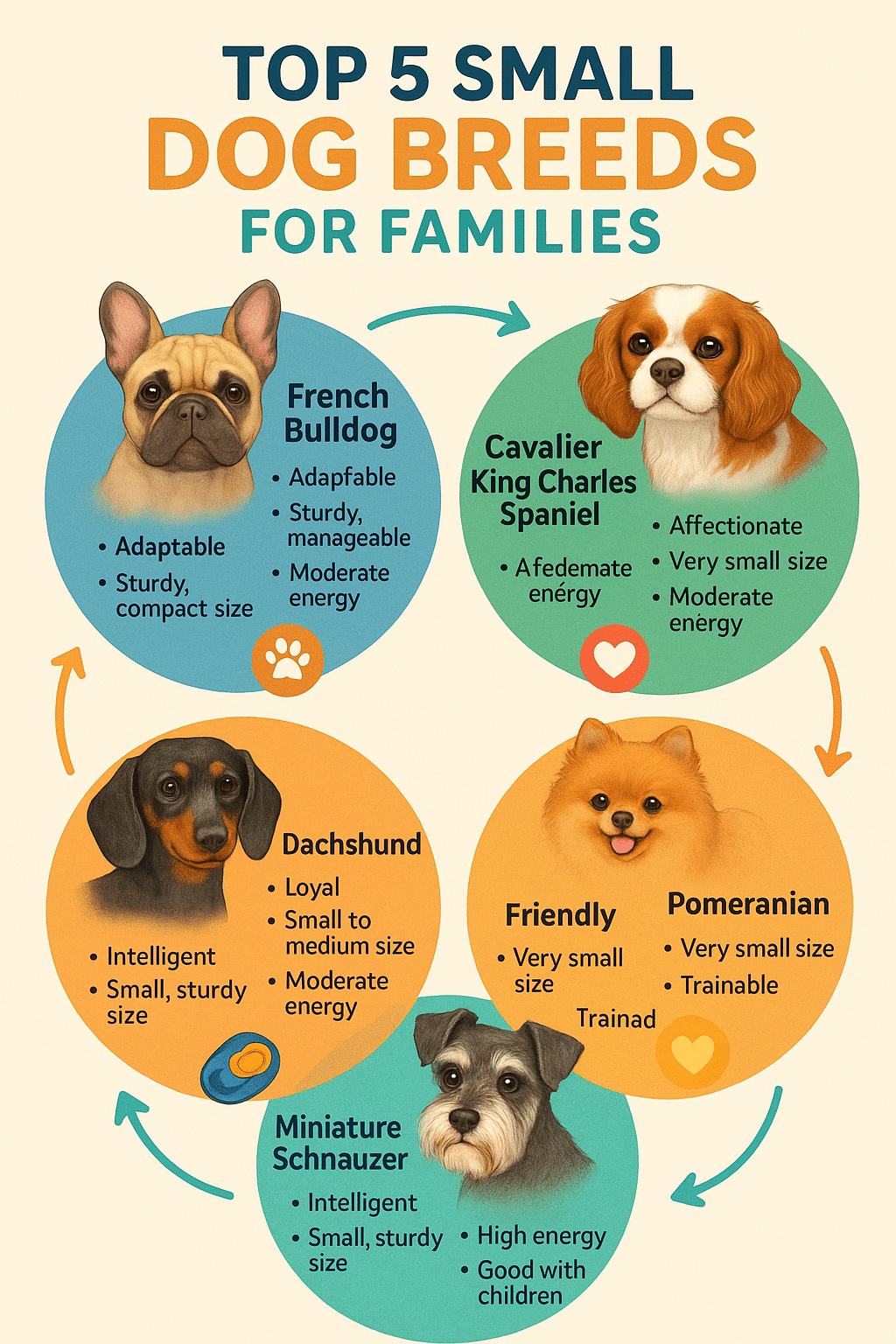
Defining Small Dog Breeds: Toy and Miniature Categories
Small dog breeds can generally be categorized into two main groups: toy and miniature breeds. These terms often get tossed around interchangeably, but they represent specific size classifications that influence care requirements, temperament, and suitability for family life.
Toy breeds are the tiniest among the small dogs, usually weighing under 10 pounds. Examples include the Chihuahua, Pomeranian, and Maltese. These dogs are perfect lap companions and thrive in indoor environments, making them excellent choices for apartment dwellers or families looking for a petite dog that requires less exercise space.
On the other hand, miniature breeds tend to be slightly larger, weighing anywhere between 10 to 20 pounds. Breeds like the Miniature Schnauzer, Cavalier King Charles Spaniel, and French Bulldog fall into this category. They balance the compact charm of toy dogs with a bit more robustness and energy, often suiting active families who want small dogs but not the ultra-fine bones and delicate frames of toy breeds.
Understanding these distinctions helps you set realistic expectations about your future dog’s care, feeding, exercise, and training needs.
Why Small Dog Breeds Suit Family Lifestyles and Apartments
Small dog breeds pack a ton of personality into a petite package, which generally aligns with the realities of modern family living. For households juggling busy schedules, school runs, work-from-home days, and tight living quarters, these smaller dogs offer a number of advantages.
-
Space Efficiency: Unlike large breeds needing yards or substantial room to roam, small dogs adapt well to apartments and small homes. This makes them ideal for families living in urban areas or apartments that restrict larger dogs.
-
Lower Exercise Demands: While they still require regular activity to stay healthy, many small breeds can get sufficient exercise with indoor play and short walks. This suits families with young children or seniors who might find long outdoor sessions challenging.
-
Manageable Grooming: Many small breeds have coats that are easier to manage or require less maintenance than larger counterparts. This reduces grooming time and costs, a practical benefit for busy households.
-
Interactive and Affectionate: Small dogs tend to bond quickly with family members, often becoming lap dogs or bedtime companions. They thrive on affection and attention, which is wonderful for kids learning responsibility and nurturing.
-
Safety and Supervision: Smaller dogs are gentle and less likely to cause accidental harm during play—a common concern with toddlers and young kids. However, supervision is still key to ensure both child and pet are safe and happy.
All these points highlight why small dog breeds continue to top the list for families seeking a pet that brings joy without overwhelming their daily lives.
Top 5 Small Dog Breeds Ideal for Families and Training
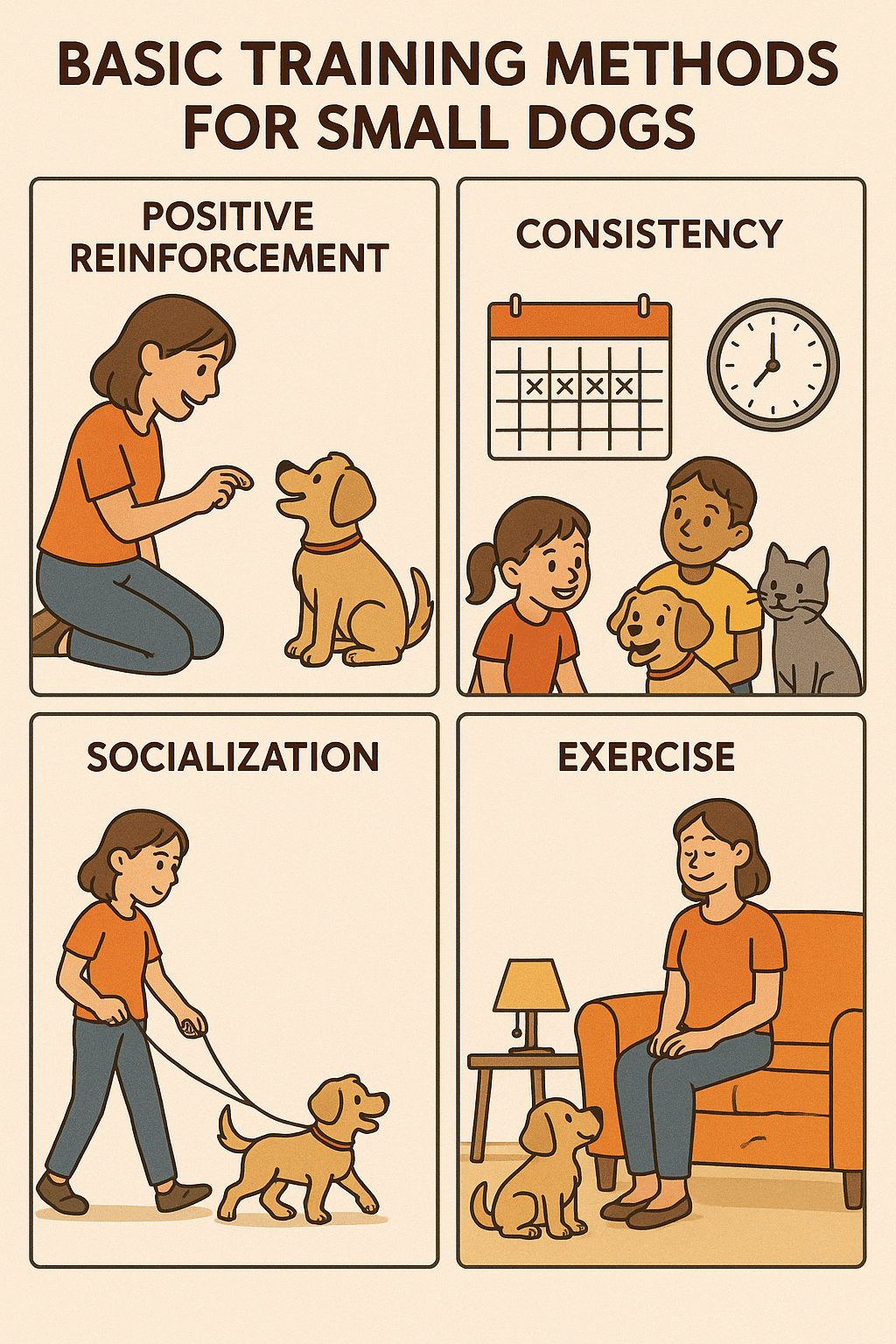
Selecting the best small dog breed for your family involves weighing temperament, trainability, grooming needs, and compatibility with kids and other pets. Let’s explore five outstanding small breeds that shine in family settings and training adaptability.
Breed 1: Cavalier King Charles Spaniel – The Gentle Sweetheart
The Cavalier King Charles Spaniel is a beautiful miniature breed weighing between 13-18 pounds, known for its regal looks and heart-melting expression. But don’t be fooled by its elegance — this breed is a bundle of warmth and friendliness.
-
Temperament: Friendly, affectionate, and sociable to a fault. They adore children and other pets, making them a perfect playmate and companion. Cavaliers are known for their gentle demeanor and rarely display aggression.
-
Suitability: Their medium-small size and moderate energy make them well-suited for families in apartments or houses. They enjoy daily walks and interactive playtime but are equally happy curling up on a family member’s lap.
-
Training: Cavaliers respond exceptionally well to positive reinforcement due to their eager-to-please nature. Early socialization is key to prevent shyness or overly soft behavior. Basic obedience commands and potty training can be achieved quickly with consistency.
-
Grooming: Their silky coats require moderate grooming—brushing several times weekly to prevent matting and occasional baths.
Real-life example: A family I know adopted a Cavalier named Rosie, whose gentle temperament made her an instant favorite among their children aged 4 and 7. She learned commands quickly, and her patience with lively kids never wavered.
Breed 2: French Bulldog – The Comical Companion
French Bulldogs, weighing about 16-28 pounds, straddle the line between small and miniature breeds. Their muscular build and distinctive “bat ears” make them instantly recognizable.
-
Temperament: Affectionate, playful, and incredibly loyal. Frenchies develop strong bonds with their owners, thriving in family environments. They’re excellent for children because of their patient and amusing nature.
-
Suitability: Their low energy and minimal exercise needs fit well with busy families or apartment life. They do well with short walks and indoor play, but excessive heat or overexertion should be avoided due to their brachycephalic (flat face) anatomy.
-
Training: Known for a somewhat stubborn streak, French Bulldogs require gentle but firm training techniques. Using positive reinforcement and keeping sessions short will yield the best results.
-
Grooming: Their short coat is easy to maintain, with routine brushing and skin care for wrinkle folds.
Expert insight: Veterinarians often advise potential Frenchie owners about respiratory challenges but affirm their suitability for families willing to be attentive about health and exercise.
Breed 3: Pug – The Loyal Clown
Pugs are classic small breeds weighing 14-18 pounds and renowned worldwide for their playful commotion and soulful eyes.
-
Temperament: Charming, affectionate, and humorous. Pugs are excellent with kids, displaying patience and a friendly nature. They crave interaction and form strong family bonds.
-
Suitability: Perfect for apartment dwellers or families with moderate space. Pugs love lounging but need regular walks to maintain a healthy weight.
-
Training: Pugs are intelligent yet can be a bit stubborn. Patience is crucial, with training done through treats, games, and consistent routines.
-
Grooming: Their short coat sheds; weekly brushing helps manage loose hair. Skin fold cleaning prevents infections.
Case study: A family with three children adopted a Pug named Max, who quickly became the household entertainer. His adaptability made training enjoyable without the pressure often associated with more excitable breeds.
Breed 4: Miniature Schnauzer – The Alert and Agile
The Miniature Schnauzer weighs between 11-20 pounds and is known for its distinctive beard and expressive eyebrows.
-
Temperament: Energetic, intelligent, and highly trainable. They combine vigilance with friendliness, often acting as little watchdogs without being overly aggressive.
-
Suitability: Ideal for families that enjoy active play but want a dog that adapts to indoors as well. Their energy lines up well with kids who enjoy playtime and exercise.
-
Training: Miniature Schnauzers excel with positive reinforcement and enjoy problem-solving games. Early socialization staves off potential territorial behavior.
-
Grooming: Their wiry coat requires professional grooming every 6-8 weeks and regular home brushing.
User experience: Families often report their Schnauzers as fun-loving yet obedient, making them an excellent fit for households seeking both companionship and a small guardian.
Breed 5: Maltese – The Elegant and Affectionate Lapdog
Maltese dogs are toy breeds, weighing under 7 pounds, with snow-white coats that are both beautiful and quite striking.
-
Temperament: Gentle, lively, and affectionate. They bond deeply with their owners and are excellent lap dogs for all family members, including seniors and children.
-
Suitability: Perfect for small homes and families seeking a companion dog that adapts well to indoor life. They are sensitive and respond well to quiet, loving environments.
-
Training: Maltese dogs are smart and respond quickly to consistent, reward-based training. However, early socialization is essential to prevent any timidity.
-
Grooming: Their long hair demands daily brushing to avoid mats and tangles and regular grooming appointments.
Veterinary perspective: Maltese dogs generally enjoy good health but require diligent coat care to keep their iconic looks.
Key Factors When Choosing a Small Dog Breed for Your Family
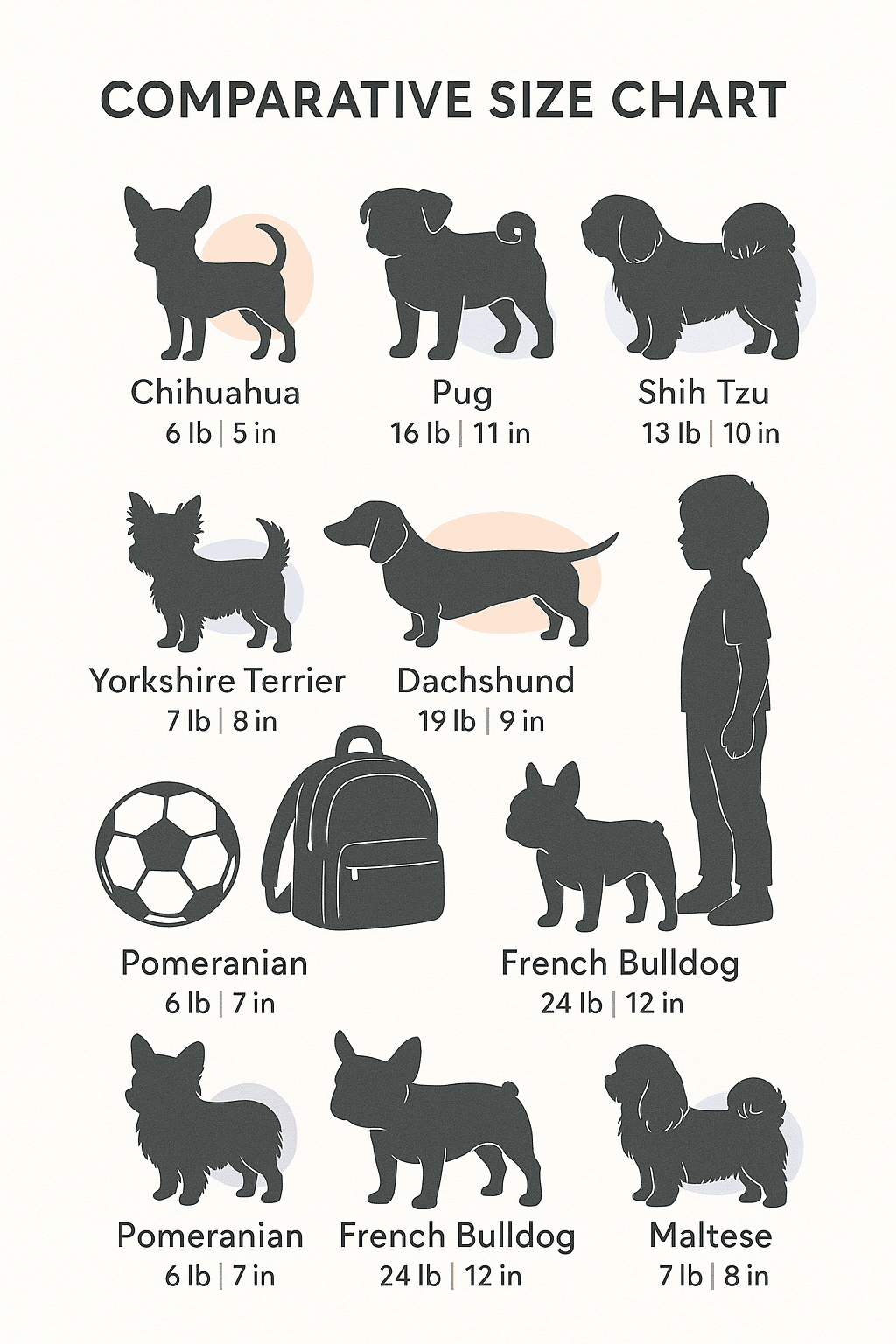
Temperament and Compatibility with Children and Other Pets
Choosing a breed whose personality blends well with the dynamics of your family is crucial. Kids’ energy levels, presence of other pets, and parents’ schedules all influence this choice.
-
Patience and tolerance: Breeds like the Cavalier King Charles Spaniel and Pug are naturally patient with young children, reducing mishaps during play.
-
Social Compatibility: Small dog breeds that thrive with other animals often exhibit calm, adaptive behavior. Early introduction and positive experiences help foster harmonious relationships.
-
Energy Match: Some small breeds, such as the Miniature Schnauzer, have higher energy levels that suit active families; others prefer the calm and quiet lifestyle of seniors or small children.
Grooming Needs and Maintenance for Small Breeds
Grooming can be a deciding factor when picking a small dog breed.
-
Low-maintenance coats: Breeds like the French Bulldog or Pug require minimal grooming but do benefit from regular skin and ear care.
-
High-maintenance coats: Maltese and Cavalier King Charles Spaniels need frequent brushing and professional grooming.
Understanding the time and cost involved in coat maintenance prevents surprises and keeps your pet healthy and comfortable.
Health Considerations and Lifespan Insights
Small dog breeds generally have longer lifespans than larger ones but vary individually.
-
Common health issues: French Bulldogs and Pugs may suffer from respiratory conditions due to their flat faces. Miniature Schnauzers are prone to bladder stones and pancreatitis. Being aware of breed-specific health risks lets families plan appropriate veterinary care.
-
Lifespan: Many small breeds live between 12 to 16 years, some even longer. This means a long-term commitment, something families should thoughtfully consider.
Exercise and Activity Requirements for Small Breeds
Exercise needs for small dogs differ widely:
-
Low to moderate: French Bulldogs and Pugs prefer short walks and indoor play sessions.
-
High energy: Miniature Schnauzers require more vigorous exercise and mental stimulation.
Matching your family’s lifestyle and availability with the dog’s energy levels ensures mutual happiness and behavioral balance.
Effective Training Techniques for Small Dog Breeds
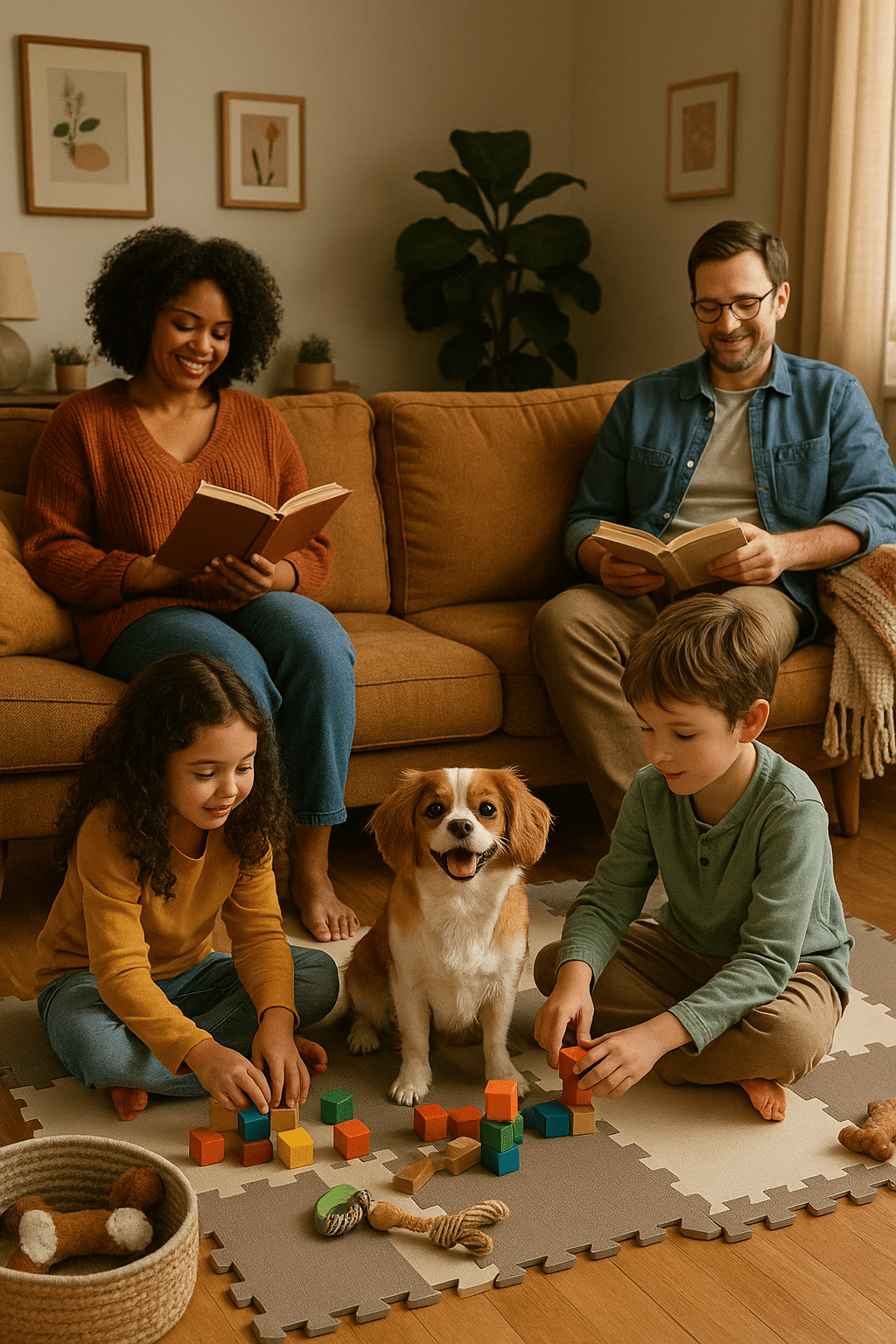
Puppy Training Tips Tailored for Small Dogs
Training small dogs comes with its unique nuances. Because of their size, people sometimes underestimate the importance of early training, which can lead to behavioral challenges.
-
Consistency is key: Use short, frequent training sessions that fit your dog’s attention span.
-
Socialization: Expose your puppy to a variety of people, environments, and other pets to instill confidence.
Crate Training and Indoor Activities
Crate training is invaluable, providing your dog a safe and comfortable space. It prevents accidents and reduces anxiety. Small breeds often adapt well to crates, and crate size should be appropriately small—not too large, as it can become inviting for elimination.
Indoor activities such as treat puzzles, obedience games, and agility challenges help expend energy when outdoor options are limited.
Approaches to Socialization for Family-Friendly Behavior
Small dog breeds benefit immensely from gradual, positive socialization. Encourage calm greetings with visitors, controlled interactions with other dogs, and varied exposure to sounds and sights to build resilience.
Positive Reinforcement Strategies and Consistency in Training
Reward-based training with treats, praise, and play strengthens trust and motivates your small dog. Avoid harsh punishments, which can be counterproductive and damage delicate small dog confidence.
Managing Common Behavioral Challenges in Small Dogs
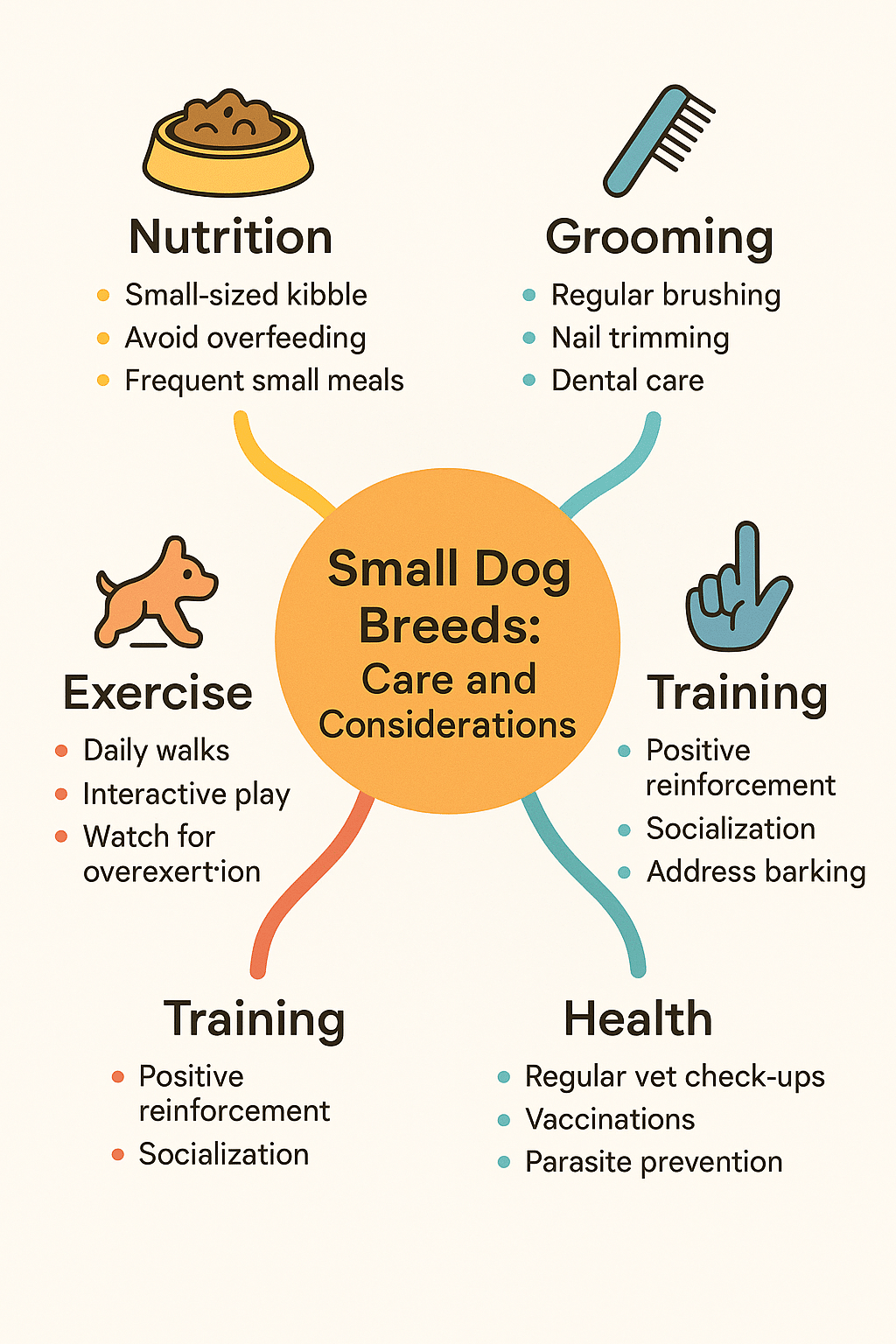
Addressing Barking, Anxiety, and Territorial Behavior
Many small dogs bark excessively if not trained early. Setting boundaries, distracting with toys, and desensitizing through socialization helps minimize noise.
Anxiety can manifest during separation or new experiences; ensuring gradual independence and safe spaces supports emotional health. Territorial behaviors often come from insecurity—consistent leadership and structured routines alleviate these issues.
Overcoming Stubbornness and Encouraging Obedience
Some breeds like French Bulldogs can be stubborn, but patience and variety in training methods (e.g., mixing treats, toys, and praise) maintain their interest and cooperation.
Nutrition and Veterinary Care for Small Dogs
Dietary Needs Specific to Small Breeds
Small dogs have faster metabolisms and require calorie-dense but balanced diets. Specialized small-breed kibbles offer nutrients in appropriate sizes to promote dental health and digestion.
Avoid overfeeding to prevent obesity, a common issue in small breeds, which can exacerbate health problems.
Preventative Health Care and Regular Checkups
Regular vet visits, vaccinations, dental care, and parasite controls are non-negotiable. Small dogs may have breed-specific health protocols; establishing a relationship with a vet familiar with small breeds is vital.
Integrating Your Small Dog into a Busy Family Home
Balancing Attention and Independence for Small Dogs
Small dogs sometimes develop separation anxiety if overly doted upon. Teaching independence early through crate time and alone play prevents clinginess.
Ensuring Safe Interaction with Children and Other Pets
Teach kids respectful ways to handle small dogs—no rough play or squeezing—and supervise interactions to keep everyone safe and happy.
Unique Perspectives: The Emotional Benefits of Small Dog Breeds in Multigenerational Families
How Small Dogs Facilitate Bonding Across Age Groups
Small dogs are excellent bridges between grandparents, parents, and children, offering affection and purpose. Their manageable size allows seniors to participate actively in care and play.
Small Breeds as Emotional Support Companions for Seniors and Kids
Many small breeds naturally lend themselves to therapy-like roles. Their companionship reduces loneliness and anxiety in seniors and provides emotional security for children.
Resources and Support for New Small Dog Owners
Recommended Training Programs and Online Communities
Training resources like the American Kennel Club’s online guides or The Association of Professional Dog Trainers provide excellent support. Online communities on Facebook or Reddit offer peer support and tips specific to small breeds.
Finding the Right Veterinarian and Grooming Services
Choose vets experienced with small breeds and groomers skilled in handling tiny, sometimes delicate dogs. Ask for referrals and read reviews to ensure quality care.
Conclusion: Choosing the Best Small Dog Breed for Your Family’s Unique Needs
Bringing a small dog breed into your family is a joyful, life-enhancing decision rich with love, learning, and companionship. Whether you opt for the regal Cavalier King Charles Spaniel, the comical French Bulldog, or the affectionate Maltese, each breed offers unique traits that can beautifully complement your family’s lifestyle.
Remember, the best small dog breed for your family depends on temperament compatibility, grooming capacity, health awareness, and activity levels. Combine these with enthusiastic training and affectionate care, and you’ll have a loyal friend ready to become an unforgettable part of your family’s journey.
If you’re ready to open your heart and home to a small dog breed, start exploring reputable breeders or adoption shelters today. Your perfect match is waiting, ready to fill your life with wagging tails, warm cuddles, and endless joy!
FAQs About Small Dog Breeds for Families and Easy Training
1. What are the best small dog breeds for families with children?
Breeds like the Cavalier King Charles Spaniel, Pug, and Miniature Schnauzer are excellent choices due to their gentle natures and adaptability with kids.
2. Are small dog breeds easy to train?
Many small breeds, including the Maltese and Cavalier, respond well to positive reinforcement training. Consistency, patience, and early socialization are key to success.
3. Which small dog breeds are suitable for apartment living?
French Bulldogs, Pugs, and Maltese dogs are well-suited for apartments owing to their lower exercise needs and manageable sizes.
4. How do I manage barking in small dog breeds?
Training your dog early with commands like “quiet,” using distractions, and ensuring they get enough mental and physical activity helps reduce excessive barking.
5. What health concerns should I watch for in small dog breeds?
Respiratory issues in brachycephalic breeds (French Bulldog, Pug), dental problems, and obesity are common. Regular vet checkups and proper diet are essential for prevention.
Quick Takeaways
- Small dog breeds fall mainly into toy and miniature categories, each with specific care needs.
- Breeds such as Cavalier King Charles Spaniel and Maltese excel in family friendliness and easy training.
- Temperament, grooming, health, and exercise requirements differ and must align with your family’s lifestyle.
- Consistent, positive reinforcement training tailored to small dogs fosters obedient, happy pets.
- Early socialization and proper care prevent behavioral and health issues common in small breeds.
- Small dogs provide emotional support and bonding benefits across multigenerational families.
- Reliable resources, experienced veterinarians, and quality grooming greatly enhance the small dog ownership experience.
Ready to add one of these delightful small dog breeds to your family? Embrace the journey with patience, love, and knowledge—you’re on your way to raising a loyal, affectionate companion who’ll enrich your life for years to come.



